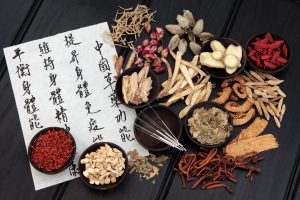 The East Asian herbalism is a practice which is also based on energetic evaluation. The great Chinese medical tradition makes it the best transmitted, the most practiced and the most studied modality, for more than 2000 years until today. It has never stopped improving its efficiency and enriching with an increasingly vast clinical experience adapted to modern problems.
The East Asian herbalism is a practice which is also based on energetic evaluation. The great Chinese medical tradition makes it the best transmitted, the most practiced and the most studied modality, for more than 2000 years until today. It has never stopped improving its efficiency and enriching with an increasingly vast clinical experience adapted to modern problems.
What makes East Asian herbalism so special is the use of ancestral formulas designed around the synergy of plants with each other. One important aspect in prescribing a formula is to consider the person as a whole, “holistically”. We attach great importance to the analysis of the person’s constitution, the overall state of digestive function, as well as the evaluation of clinical evidence such as the tongue, pulse and abdomen, in addition to the symptoms actually reported by the person who is consulting.
This last aspect – abdominal palpation – has been particularly emphasized in Japan, where the Kampo – which literally means “Chinese method” – is practiced. Kampo has also been a highly developed herbalism tradition since the 6th century thanks to the travels of Buddhist monks and doctors. In Japan, kampo is performed exclusively by physicians and is the subject of leading-edge pharmaceutical research, from which we now benefit to support our clinical practice.
You can consult Bertrand Loranger, Ac. and Sylvie Lartraverse, Ac. for a consultation in Chinese herbs.
